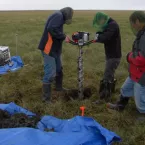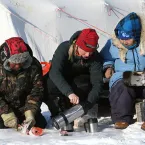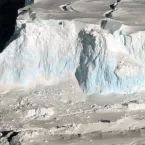Our Research
As climate changes, how do Earth's frozen areas affect our planet and impact society?
In this section
Related News & Stories
Filter by:

Feature Story
NSIDC researcher Kevin Schaefer leads the Remotely Sensed Active Layer Thickness (ReSALT) project to develop a way to monitor the active layer in permafrost remotely, using a combination of satellite, aircraft, and ground-based data, as part of the NASA’s Arctic Boreal Vulnerability Experiment (ABoVE).

Spotlight
Since 1978, Arctic sea ice extent has declined and ice cover has thinned, as reported in a new publication in the Annals of the New York Academy
Analysis - Sea Ice Today
In January 2019, a pattern of high-altitude winds in the Arctic, better known as the polar vortex, weakened, sweeping frigid air over North America and Europe in the second half of the month.

ELOKA Spotlight
ELOKA scientist Shari Fox has been named a Pew fellow in marine conservation in 2019.

Feature Story
A group of researchers and logistic experts have descended on West Antarctica to begin a five-year study of Thwaites Glacier. The project, known as the International Thwaites Glacier Collaboration, aims to better understand the glacier's dramatic ice loss and potential impact on sea level rise.
Analysis - Sea Ice Today
As 2018 came to a close, Arctic sea ice extent was tracking at its third lowest level in the satellite record, while sea ice in the Antarctic remained at historic lows.